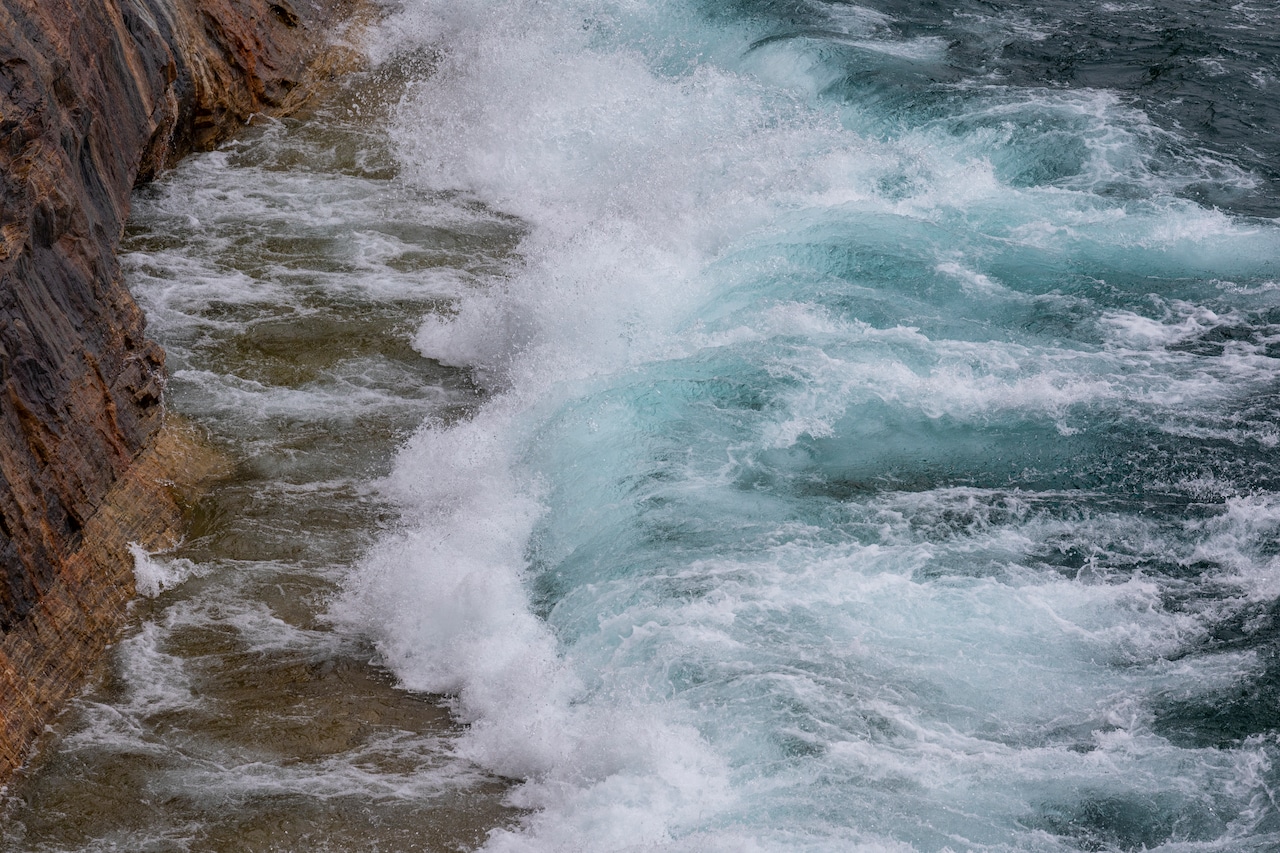Copyright cleveland.com

CLEVELAND, Ohio – Not since the Edmund Fitzgerald went down 50 years ago today has a giant freighter been lost on the Great Lakes, but prior to then, a number of big ships met their demise, often in late-season stormy weather. More than 6,000 ships are estimated to have met their end on the Great Lakes. Among them is the SS Daniel J. Morrell, which sank in Lake Huron on Nov. 29, 1966 during a storm. Only one of the 29 crew members, Dennis Hale, survived. He died in 2015 in Ashtabula at age 75. The SS Carl D. Bradley left Buffington, Indiana on Nov. 17, 1958, on what was to be its last trip of the season, according to the Presque Isle County Historical Museum in Rogers City, Michigan. It sank in Lake Michigan. Thirty-three of the 35 on board perished. Most were from Rogers City. The SS Henry Steinbrenner sank off Isle Royale in Lake Superior in May of 1953. Seventeen sailors died. The wreck was discovered in 2023. The Steinbrenner was commissioned by the Cleveland-based Kinsman Transit Co. The company was owned by the Steinbrenner family, which included George III, known to most Americans until his death in 2010 as the demanding principal owner of the New York Yankees. By far the worst year for shipwrecks was 1913, when a storm known as a “white hurricane” blew into the upper Great Lakes. “When the winds quieted and the waves calmed, 12 freighters were lost beneath lakes Superior, Huron, Michigan, and Erie,” according to Lake Superior Magazine. “Thirty-one more vessels had been pounded to pieces on rocks or driven onto land. The official death toll was 248, but that’s just the sailors registered on the ships that sank. Shipping personnel records of the day weren’t always accurate; it’s likely that more sailors perished.” Edmund Fitzgerald Edmund Fitzgerald remains the most talked about, thanks largely to the haunting ballad “Wreck of the Edmund Fitzgerald” by Canadian singer-songwriter Gordon Lightfoot. The Fitz went down in Lake Superior on Nov. 10, 1975. All 29 men, nearly half from Northern Ohio, lost their lives. Read more: Fifty years later, the legend of the Edmund Fitzgerald lives on The 729-foot ore boat that hauled taconite pellets from the Iron Range up north to the steel mills of the lower Great Lakes was the biggest and fastest freighter on the lake when it was christened in 1958. Yet 17 years later it would be no match for the waves and the wind that pummeled its long, narrow hull into submission. Why the Fitz sank is still debated, with the U.S. Coast Guard, the National Transportation Safety Board, and the Lake Carriers’ Association at the time drawing various conclusions. Some blame leaking hatches that allowed water crashing over the deck to flood the fully loaded boat, although a subsequent review concluded the crew in charge of securing the hatches would not have been at fault. Others believe the ship’s bottom scraped the shoals along the Canadian coast while taking what was thought to be a safer route in the storm. Capt. Bernie Cooper of the lake freighter Arthur M. Anderson, which was trailing the Edmund Fitzgerald by 10 miles when it went down, thought the ship “bottomed out” and had been taking on water for hours before the huge sea devoured it whole. The Fitzgerald’s captain, Ernest McSorley, had radioed earlier in the day that his ship was listing to one side and had suffered structural damage, and yet at 7:10 p.m. he responded to the Anderson, “We are holding our own.” Minutes later the ship vanished from the Anderson’s radar. “I believe he hung up the phone from that last call and dove right under,” Cooper told a U.S. Coast Guard Board of Inquiry several days later, according to an account in The Plain Dealer. “I don’t think those fellows even had time to get out of the wheelhouse.” Northern Ohio hit hard Of the 29 men on board, seven were from Northeast Ohio and just as many from the Toledo area, including McSorley, 63, who had an ill wife and was expected to retire after the ship docked for the season in his hometown. His first mate was John “Jack” McCarthy, who at 62 was also planning to retire. Jack McCarthy’s son, John McCarthy, was 30 at the time. A graduate of St. Ignatius High School in Cleveland, he had spent college summers on ore boats, including a stint as a wiper in the engine room of the Fitzgerald. McCarthy was an insurance adjuster and marine surveyor in the Virgin Islands when word went out that his father’s ship was lost. By the time McCarthy reached his parents’ home in Bay Village, the worst had been confirmed. “I think they all had been declared lost,” he said. Jim Majoros was working at his grandfather’s nursery southeast of Fairport Harbor when he first learned of the tragedy. His father’s sister was married to Eddie Bindon, a first assistant engineer on the Fitz. “I felt like somebody hit me, punched me in the gut,” Majoros said. Other crewmen hailing from Northeast Ohio included Bruce Hudson, 22, of North Olmsted, and Mark Thomas, 21, of Richmond Heights. They were deckhands who became good friends and planned to drive across country in Hudson’s burgundy Dodge Challenger after the shipping season ended. Hudson was the only child of Oddis and Ruth Hudson. She found out her son’s ship had gone down from the radio. “He was one of those kids who could fit in everywhere,” said her niece, Pam Woodman Wittig, who was 14 at the time. Hudson was also going to be a father; his girlfriend had told him over the phone that she was pregnant. “And they had plans for when the ship docked that they would get an apartment together and raise a family,” Wittig said. Thomas -- whose father, Robert Thomas, was general counsel for Oglebay Norton, which held a lease on the ship at the time it went down -- had been weighing whether he wanted to stay in the marine business, according to Thomas Green, who would become Oglebay Norton’s CEO in 1992. Green explained in a documentary that it fell on the elder Thomas to settle the accounts of the lost seamen, including his own son. “He never was the same individual,” Green said. “It was just so tough.” The sinking also hit hard in Ashtabula, hometown of deckhand Paul Riippa, 22, and watchman Karl Peckol, 20. Peckol, the youngest of the crew, had signed on to the Fitzgerald to earn money for college. Jim Paulchel, who taught Peckol in 8th grade and sailed one season as an officer’s porter on the lake freighter Charles M. White, said Peckol was always smiling. “Yepper, he was a good kid,” Paulchel said. Also from Northeast Ohio was James A. Pratt of Lakewood. A story from The Plain Dealer said he was 44 when he died and left behind a wife and 5-year-old daughter. Remembering the crew Lightfoot’s ballad got some details wrong. The ore the Fitz was hauling came from a mill in Minnesota, not Wisconsin, and it wasn’t headed to Cleveland, but to Zug Island on the Detroit River. Decades later, Lightfoot would replace the lyric “a main hatchway gave in” during his performances after research had absolved the crew of being responsible. That meant a lot to Ruth Hudson, whose son was a deckhand, and she grew close to Lightfoot over the years. A driving force to protect the dignity of her son and his shipmates, whose bodies were left with the crumpled Fitz, Hudson pushed to have the wreck site, which is in Canadian waters, declared off limits. For years, Hudson made the annual trip to Whitefish Point for the bell-ringing ceremony on Nov. 10. She missed it in 2014 because of failing health, and the following year, on the eve of the 40th anniversary, she got a call at her assisted-living residence in South Carolina from Lightfoot. They talked for several minutes “like they were old friends,” Wittig said, “and just a couple hours later she passed away.” John McCarthy will do what he usually does on the anniversary: toast his father and the 28 others at the West End Tavern in Lakewood. The tradition began nearly 40 years ago and has since grown to include other members of the Great Lakes community. It’s a solemn affair that occurs shortly after 7 p.m. and usually involves a bagpiper playing “Amazing Grace” and an Irish dirge. Someone always reads the name, age, position, and hometown of each of the crewmen who died. “It’s not packed to the gills, but it’s pretty full,” McCarthy said. “It’s a short ceremony and it’s for all twenty-nine.” What bothers McCarthy most, he said, is that a good guy like his father, a caring man and a great provider to his family, lost his life in such a cold, dark, and violent way. McCarthy can still remember his father calling home when report cards came out to see how he, his brother, and two sisters were doing in school. “It was like going to confession,” McCarthy said fondly, with all four lining up for their turn on the phone. “It was just a credit to him,” McCarthy said. “He was very involved, even though he was far away.”



